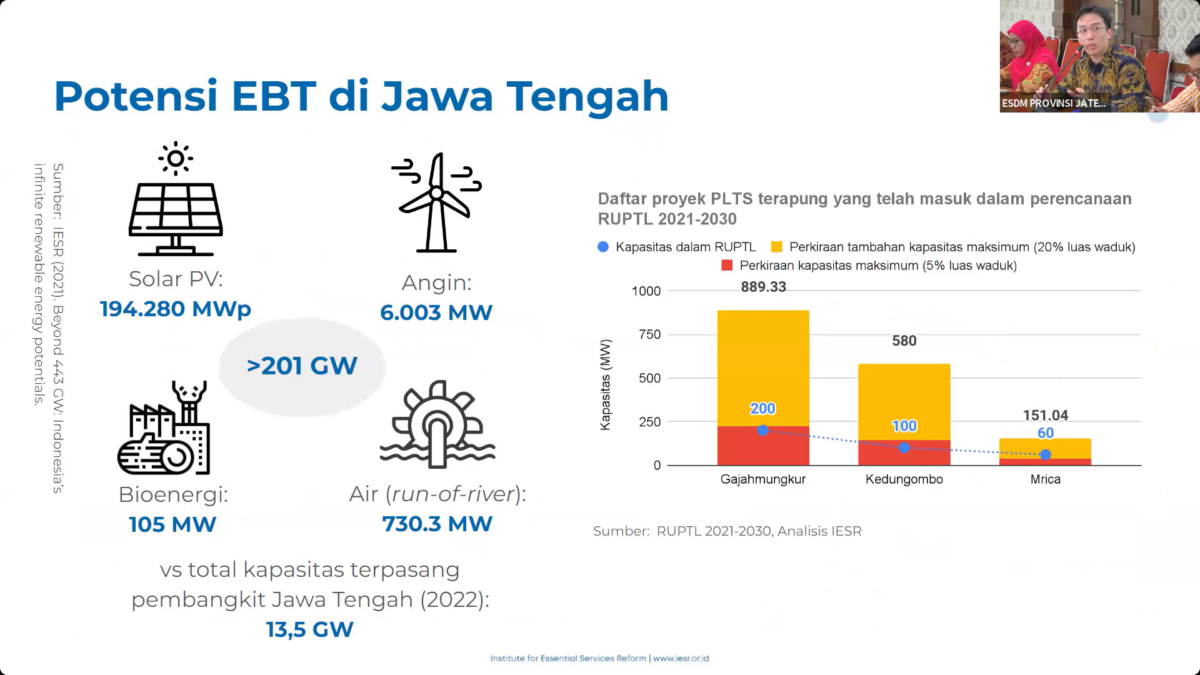Semarang, August 1, 2024 – Central Java, one of Indonesia’s largest provinces, holds significant potential for renewable energy development. With a growing population and increasing energy needs, the province faces the challenge of sustainably meeting these demands. This initiative is not only crucial for supporting economic growth but also essential for achieving the Regional Energy Plan (RUED) targets, which focus on energy sustainability and fulfilling commitments to a greener energy transition.
To enhance the understanding of local government agencies in the development process of renewable energy power plants, IESR, in collaboration with the Central Java Energy and Mineral Resources Agency (ESDM), held the Capacity Building Renewable Energy Power Plant Project 101 on Thursday (1/8/2024). This activity aimed to introduce the National Electricity Supply Business Plan (RUPTL) document to relevant stakeholders in Central Java Province.
The Head of the Central Java Energy and Mineral Resources Agency (ESDM), Boedyo Dharmawan, explained that they aim to develop local energy potential within villages. To achieve this, they are establishing energy-independent villages based on the local energy resources available in the area. With this goal in mind, they have also identified renewable energy potential and hope to maximize it in the development of renewable energy power plants under the RUPTL.
“In an effort to support energy policies, the Central Java Provincial Government seeks to establish energy independence based on local potential. RUPTL, as a planning document for electricity development rooted in local potential, can serve as a catalyst to accelerate renewable energy in Central Java,” said Boedyo.
Abraham Octama Halim, a power system analyst from IESR, stated that Central Java has significant renewable energy potential compared to other provinces, especially in hydropower and solar energy. This includes 194,280 MWp of solar energy, 6,003 MW of wind energy, 105 MW of bioenergy, and 730.3 MW of hydropower. Abraham emphasized that this renewable energy potential can be developed through direct selection for project procurement:
“For NRE project procurement in the RUPTL, it is done through direct selection. Based on the Minister of Energy and Mineral Resources Regulation No. 4/2020, Article 4, Paragraph 1, electricity procurement from renewable energy sources is conducted through direct selection, where several providers will be invited to submit bids and evaluated to select the best provider based on certain criteria such as price, quality, and experience,” Abraham added.
Ricky Faizal, VP of Pengendalian RUPTL at PT Perusahaan Listrik Negara (PLN), discussed the challenges and opportunities in developing electricity infrastructure based on the Draft RUPTL 2024-2033. Ricky explained that the composition of additional power plants will shift from thermal-based to renewable energy-based, particularly variable renewable energy (VRE).
“Over the next 10 years, PLN will develop power plant capacity, including renewable energy plants, except for rooftop solar power systems, which will be developed by consumers. The total additional capacity of power plants by 2033 will reach 47.1 GW (including the rooftop solar power system quota and 43.6 GW without the rooftop solar power system quota),” he explained.

